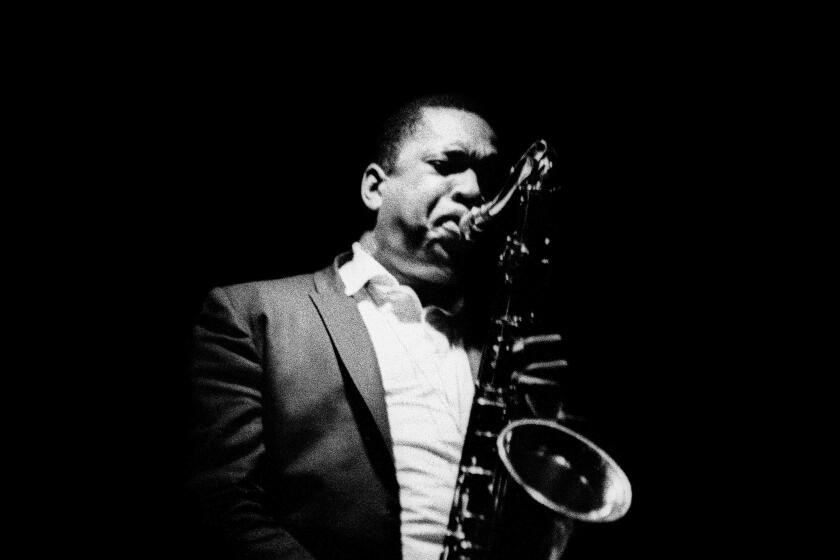Best historical album Grammy reps jazz, Native Americans, prisoners and activists
- Share via
The Grammy Awards celebrate what is considered to be the best contemporary music issued in the last year. Spread across dozens of categories, the honors provide a snapshot of the here-and-now — or at least aim to.
Only one key category, Best Historical Album, though, gazes back to celebrate the best resurrected recordings. Each year the nominees span genres and decades, homing in on moments in history that either altered its course or captured particularly unique frequencies.
For those equally obsessed with current and past sounds, this sole trophy hardly captures the range and bounty of historical recordings. Absent a sub-ceremony that focuses solely on reissues and archival recordings, though, it’ll have to do. Below, a glimpse at this year’s five nominees.
See the most-read stories in Entertainment this hour >>
Bob Dylan, “The Basement Tapes Complete: The Bootleg Series Vol. 11” (Columbia/Legacy). In a mythic pink house in Woodstock, N.Y., Bob Dylan converged with members of the Band to play music. While recovering from a motorcycle crash and running from his fame, Dylan and the musicians set up shop in a basement and started recording. The result came to be known as “The Basement Tapes,” and this collection features everything put to tape.
Erroll Garner, “The Complete Concert By The Sea" (Columbia/Legacy). “The Concert By the Sea” was released in 1955, when jazz was a commercial force and a live record by a pianist could break through and go gold. This recording by Erroll Garner captures a set in Carmel by the Sea, Calif., that was recorded by happenstance and released less than a month later. Issued on Columbia, the record became a touchstone of mid-'50s jazz, and helped pave the way for a series of hit jazz records by artists including Miles Davis, Ahmad Jamal and Dave Brubeck. The new reissue for the first time presents the entire concert, rather than just the highlights that came out on the original album.
Various artists, “Native North America (Vol. 1): Aboriginal Folk, Rock, And Country 1966–1985” (Light in the Attic). An important collection that fills a gaping hole in America’s collective understanding of its aboriginal inhabitants, “Native North America” gathers two decades' worth of music, many by voices nearly lost to time. As described in Light in the Attic Records issue notes, amassed within is “Arctic garage rock from the Nunavik region of northern Quebec, melancholy Yup’ik folk from Alaska, and hushed country blues from the Wagmatcook First Nation reserve in Nova Scotia.”
Various Artists, “Parchman Farm: Photographs And Field Recordings, 1947–1959” (Dust-to-Digital). Like “Native North America,” the crucial tapes highlighted on “Parchman Farm” give voice to Americans absent from the official accounts: prisoners incarcerated at the notorious Mississippi State Prison at Parchman. The famed field recorder Alan Lomax first entered Parchman with a recorder in the late 1940s, and over the next dozen years returned to document the music created within. Dust-to-Digital’s beautifully designed book and CD collection pairs music with photos from the prison, offering proof that even under the most extreme circumstances, art can flourish.
Various artists, “Songs My Mother Taught Me" (Smithsonian Folkways Recordings). In 1963 the civil rights activist Fannie Lou Hamer issued a cassette of inspirational music called “Songs My Mother Taught Me.” Featuring sparse but joyous versions of spirituals that fueled and soundtracked the protest movement, Smithsonian Folkways issue features new liner notes and a 1965 interview with Hamer by Julius Lester. The activist is perhaps best known for a phrase she uttered at the 1964 Democratic convention: “I’m just sick and tired of being sick and tired.”
Follow me on Twitter: @liledit
The biggest entertainment stories
Get our big stories about Hollywood, film, television, music, arts, culture and more right in your inbox as soon as they publish.
You may occasionally receive promotional content from the Los Angeles Times.







